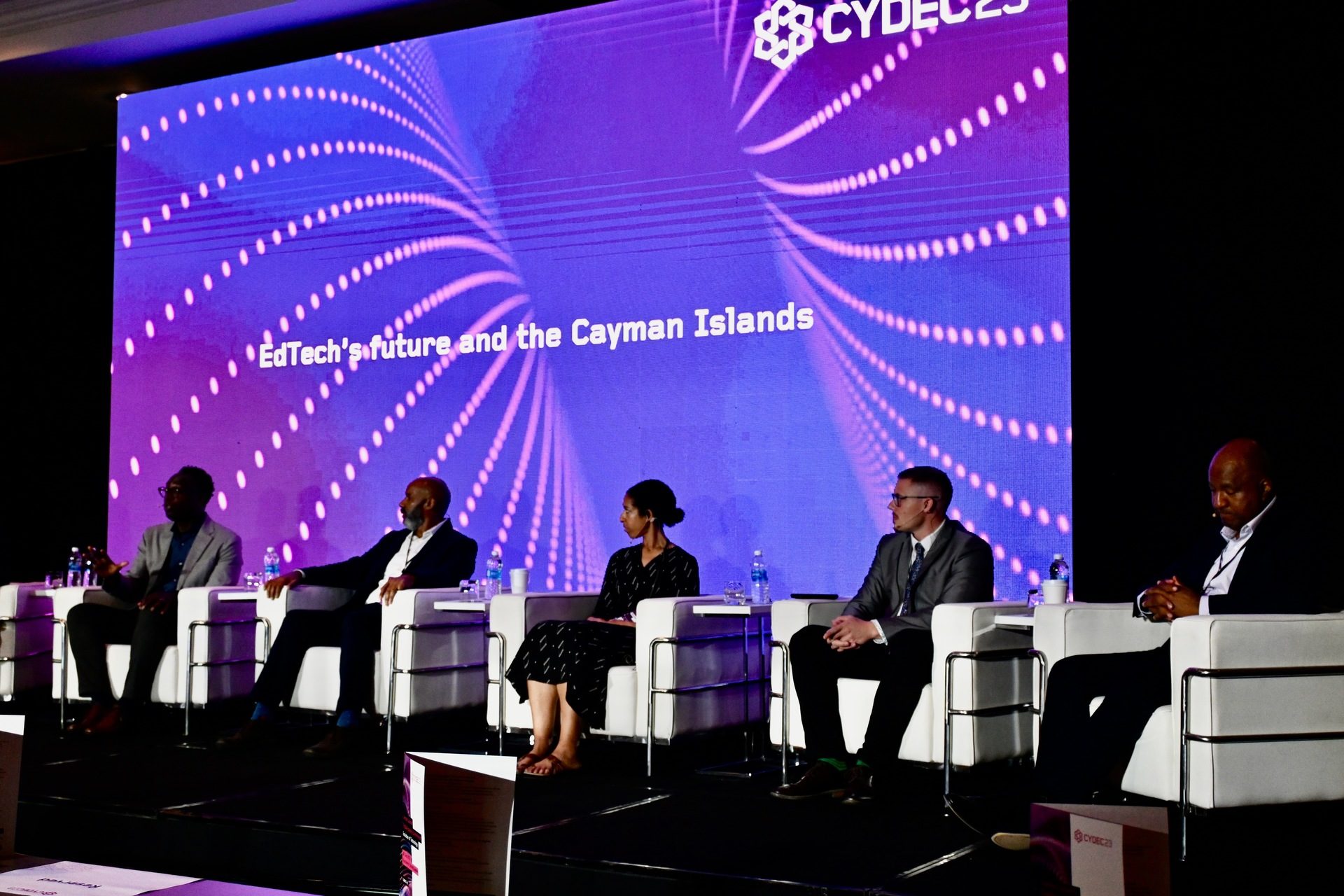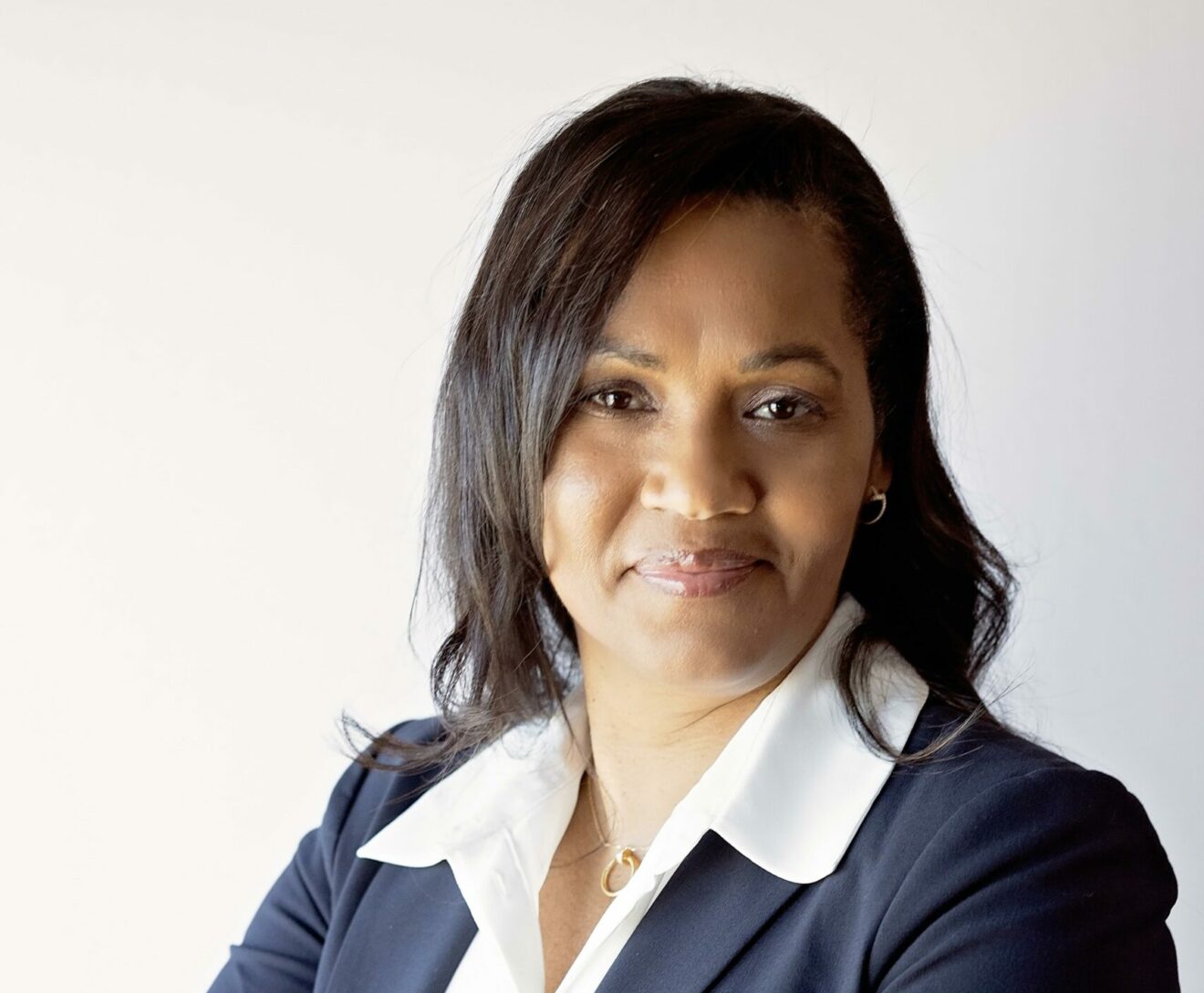Michael Klein
The use of technology is expanding in classrooms across the Cayman Islands. Since the COVID-19 pandemic there has been an accelerated shift to online learning.
The adoption of technology has not been easy but progressively improved educational outcomes, delegates at the Cayman Islands Digital Economy Conference (CYDEC) heard on Wednesday, 28 June.
Meanwhile, rapid innovation in artificial intelligence or spatial computing are poised to change the way students learn in the future. This could allow for more diverse and flexible learning opportunities, as well as greater personalisation.
Panelists and speakers at the event debated how Cayman’s education system should prepare for this transformation and ensure that education supported by technology is both inclusive and relevant.
Stephen Ta’Bois, STEM specialist in the Department of Education Services, explained how the rollout of new devices and digital platforms during the pandemic-related lockdown managed to break down the initial economic barrier for students to digital access.
“Students learn on those types of platforms now,” he said. “We’re actually starting to utilise a platform for summer school for some of our students, who require additional support in maths, which has an AI virtual tutor element to it.”
This will provide students with adaptive learning based on tailoring questions to their needs.
Ta’Bois argued that the Cayman Islands might not be as technologically behind as is commonly perceived. He mentioned how students already use ChatGPT and stressed the importance of guiding students on how to utilise these technologies effectively, beyond mere consumption.

Conference host Paul Byles expressed concern that technology like chatbots might be promoting a shallow understanding and assessment of information, in an increasingly “flippant” society, leading to hasty action.
He suggested that traditional learning materials and methods may not be as relevant today and proposed that educators should reconsider what types of skills and knowledge are being taught.
“I think we need to ask the question, what do we want kids to learn?” he said.
Byles speculated that for instance soft skills might become more crucial and emphasised that technology should be used to complement new learning methods rather than enforce traditional learning methods.
Teacher training is crucial
Ariam Mogos, Emerging Tech and Education Lead at the Hasso Plattner Institute of Design at Stanford University identified teacher professional development as a crucial aspect of technology integration in schools.
She said, “Probably one of the, if not the, greatest pitfalls when it comes to integrating technologies into classroom environments is when teachers don’t understand how to use the technology to support their students to be creative, they don’t understand how to create lesson plans, they don’t know how to explore content with the technology, and then […] they won’t use it.”
“There is not a lot of investment in professional development,” Mogos said, “because unfortunately all the investment goes into the tech.”
Even when professional development exists, it is often about using the technology, rather than how it can effectively be integrated in a specific learning environment.
She stressed the importance of investing in teacher training, shifting from rote learning to project-based curricula, and using technology to enhance creativity rather than merely reinforcing traditional education systems.
Equitable access
Jose Hernandez, manager IP & TV services at OfReg emphasised the role of utility regulator to ensure a robust, reliable infrastructure for technology, allowing for its effective adoption and use by all communities in the Cayman Islands.
Hernandez asserted that technology should be considered a tool, not an end in itself. He believes that technology should be utilised to solve educational problems, rather than being viewed as a standalone solution.
Mogos added that technology could be instrumental in addressing student access. She pointed out the availability of affordable and mobile learning platforms, such as smartphones, that can provide accessibility to many students.
From procurement to deployment
However, at the same time she highlighted the need to revise procurement, noting that public investments in technology can sometimes lead to adverse deals, leaving schools burdened with costs and students unable to benefit as they should.
She said the procurement process has a vital role to play in determining which technologies would support the learning objectives and ensuring transparency in the decision-making processes.
Stephen Ta’Bois agreed that it is fundamental to marry technology with the teachers’ understanding of pedagogy.
He said, “I can get ChatGPT to write a lesson plan in 10 seconds, but it’s not going to adapt the lesson specific to the students that are in front of me.”
At the same time just dropping a piece of technology in the classroom requires more than the idea that it might be useful. It needs proper planning in terms of how it fits in with existing technology, its purpose and how it will be deployed in conjunction with training for it to be most effective.
Ta’Bois added that recent curriculum changes included a move away from classical ICT (Information and Communication Technology) to computer science.
He further revealed plans to develop digital credentials for students, including micro-credentials, which could become part of a student’s portfolio that can be shared with prospective employers.


